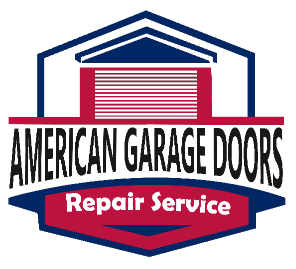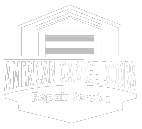When it comes to home improvement projects, garage door installation is one of the most significant upgrades you can make. A well-installed garage door not only enhances the curb appeal of your home but also improves security and energy efficiency. However, achieving a smooth and successful garage door installation requires careful planning, research, and hiring the right professionals. Whether you are looking to replace an old door or install a new one, there are several factors to consider to ensure everything goes smoothly.
In this guide, we will walk you through the key steps and considerations for a successful garage door installation, helping you navigate the process with ease. From selecting the right materials to hiring an experienced professional, you will have all the knowledge you need to get the job done right.
1. Choose the Right Garage Door Style for Your Home
The first step in any garage door installation is selecting the right style for your home. Your garage door should complement the overall aesthetic of your property while meeting your functional needs. Here are a few popular styles to consider:
Traditional Raised-Panel Garage Doors: These are classic designs featuring a series of raised panels. They are highly customizable and fit well with various home styles.
Carriage House Garage Doors: If you want to add charm and character to your home, a carriage house-style door may be the ideal choice. These doors can be designed to look like traditional barn doors but with modern functionality.
Contemporary Garage Doors: If your home has a more modern or minimalist design, a contemporary garage door with clean lines, glass panels, and sleek finishes may be the best fit.
Custom Garage Doors: If you have specific needs or want a truly unique design, custom doors are a great option. Work with a designer to create a garage door that suits your tastes and the architecture of your home.
2. Understand Your Material Options
Garage doors are available in a variety of materials, each with its own advantages and considerations. The material you choose will impact the durability, maintenance, and appearance of your garage door. Here are some popular options:
Steel Garage Doors: Steel is one of the most common materials used for garage doors. It is durable, low-maintenance, and available in various styles and finishes. Steel doors are also excellent for insulation, helping to regulate temperature inside your garage.
Wood Garage Doors: If you’re looking for a natural and rustic appearance, wood garage doors are a timeless option. They can be customized with different stains and finishes. However, they require more maintenance than steel doors, as wood can warp, crack, or rot over time.
Aluminum Garage Doors: Aluminum doors are lightweight, corrosion-resistant, and can provide a sleek, modern appearance. They are ideal for homeowners looking for a low-maintenance option with a contemporary look.
Fiberglass Garage Doors: Fiberglass doors are known for their durability and energy efficiency. They can be molded into various shapes and styles and often mimic the appearance of wood without the maintenance issues.
Vinyl Garage Doors: Vinyl doors are highly resistant to dents, rust, and corrosion. They are a great option for homes in areas with harsh weather conditions.
3. Consider Insulation for Energy Efficiency
If your garage is attached to your home or you use it as a workshop or living space, insulation is a crucial factor in your garage door installation. An insulated garage door helps regulate the temperature inside your garage, keeping it cooler in the summer and warmer in the winter.
Insulated garage doors also help reduce energy consumption and lower your utility bills. If energy efficiency is a priority for you, look for garage doors with a high R-value (a measure of insulation effectiveness). Steel doors with insulation or double-layered construction are great choices for insulation.
4. Get Accurate Measurements
Accurate measurements are vital for a proper garage door installation. Even the smallest discrepancy can lead to operational issues, such as difficulty opening and closing the door or uneven wear on the components.
Before installation, make sure your garage opening is measured correctly, accounting for the width, height, and depth of the door. It’s also important to measure the clearance above the garage door opening to ensure there’s enough space for the door to open and close smoothly.
If you’re not confident in your ability to take precise measurements, consider hiring a professional to handle this task. A professional installer can ensure that your measurements are accurate and that the door will fit perfectly.
5. Choose the Right Garage Door Opener
The garage door opener is an essential part of the installation process. It’s what allows your garage door to open and close smoothly and safely. There are several types of garage door openers to consider, each with its own set of features:
Chain Drive Openers: These are the most affordable and widely used type of garage door opener. They operate using a metal chain, which moves the door up and down. While chain drive openers are durable, they can be noisy, which may be a consideration if your garage is attached to your home.
Belt Drive Openers: Belt drive openers operate using a rubber belt, which makes them much quieter than chain drive openers. They are a great option for homes with living spaces above or adjacent to the garage.
Screw Drive Openers: These openers use a threaded rod to move the door. They are known for being durable and require less maintenance than chain or belt drive openers. However, they can be slower and noisier.
Direct Drive Openers: Direct drive openers are the quietest and most reliable option. They operate with a motor that moves along the track, which minimizes the need for moving parts. Direct drive openers are ideal for homeowners who want a silent operation.
When selecting an opener, consider the size and weight of your garage door as well as any additional features, such as Wi-Fi compatibility, battery backup, or smart home integration.
6. Hire a Professional for Garage Door Installation
While it’s possible to install a garage door yourself, hiring a professional ensures that the job is done right the first time. Professional garage door installers have the experience, tools, and expertise to handle the installation process safely and efficiently.
A reputable company like American Garage Doors can help you with the entire installation process, from choosing the right door to handling the technical aspects of installation. Professionals can also identify any potential issues during the installation and address them promptly, saving you time and money in the long run.
When selecting a contractor, make sure they are licensed, insured, and have a proven track record of successful garage door installations. You can also check online reviews and ask for references to ensure you’re hiring a reliable company.
7. Prepare Your Garage for Installation
Before your garage door installation, there are a few steps you should take to ensure the process goes smoothly:
Clear the Area: Remove any vehicles, tools, or other items from the garage to create a clear workspace for the installation team. This will help them work efficiently and safely.
Check for Obstructions: Make sure there are no obstructions in the path of the door. This includes overhead storage racks or any other items that could interfere with the door’s operation.
Ensure Access to Power: Since most garage doors require an electric opener, ensure there is access to a power outlet or that the installer has access to the necessary power source.
8. Test the Garage Door After Installation
Once your garage door has been installed, it’s essential to test it to ensure everything is working correctly. Open and close the door several times to check for smooth operation. Listen for any unusual sounds or issues, such as grinding or squeaking, which could indicate a problem with the installation.
Also, test the safety features of your door, such as the automatic reversal mechanism. This ensures the door will reverse if it encounters an obstruction while closing, preventing damage or injury.
9. Regular Maintenance and Care
After your garage door installation is complete, regular maintenance is essential to ensure its longevity and proper functioning. Periodic maintenance includes lubricating the moving parts, checking the balance of the door, and inspecting the springs and cables for wear and tear.
Routine maintenance helps prevent costly repairs and ensures that your garage door remains in good working condition for years to come. If you’re unsure about how to maintain your garage door, consult a professional for advice and service.
Why Choose Us?
A successful garage door installation can significantly enhance the functionality, appearance, and security of your home. By following these steps—choosing the right door style and material, understanding your options, hiring a professional installer, and performing regular maintenance—you can ensure a smooth installation process and enjoy the benefits of a well-functioning garage door for years to come.
At American Garage Doors, we are committed to providing high-quality garage door installations and garage door replacement. Whether you’re upgrading your current door or installing a new one, our team is here to guide you through every step of the process. Contact us today for expert advice and professional garage door installation services.
American Garage Doors
7424 W Park Ave, Houma, LA 70364, United States
(985) -633 -1623

